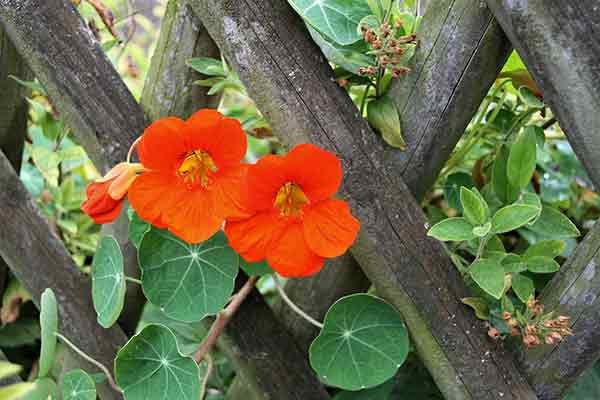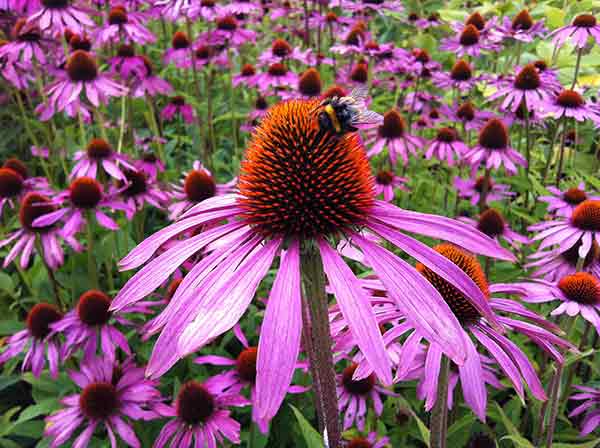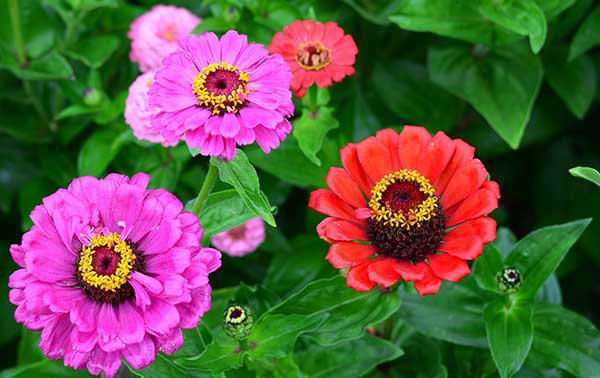Bees help fertilize up to 90% of the earth’s major food crops, including what you likely put on your plate every day. These hard-working insects are suffering from many pressures globally including chemical herbicides, viruses, mites, genetically modified crops, and harsh weather conditions. Many urban gardeners are noticing a decline in bee populations in their backyards and balconies, producing lower yields and reduced quality, size, and flavor of the food grown.
So, how can you support bee health and survival and prevent these problems? One simple step is to create a bee-friendly habitat garden to attract honey bees and local native bees.
Bees with Benefits
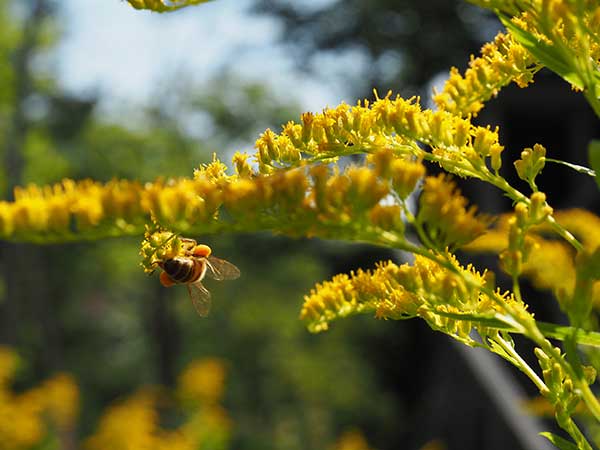
Despite all the attention that honey bees get concerning their role in pollinating crops, it is the native, solitary, or pollen bees that do the lion’s share of the work. There are around 19,500+ bee species on the planet, and of those, about 90% are solitary bees. They are incredibly efficient pollinators because:
- They tend to stay in the same crop feeding rather than flying between different crops, increasing the chance of successful pollination.
- They are untidy pollen collectors. While honey bees wet their pollen with saliva as they collect it to ensure they can carry a heavy load, solitary bees tend to spill a lot of dry pollen as they fly from flower to flower. These sloppy habits work in our favor!
- Both the males and females share the foraging, unlike honey bees where only the women worker bees do ALL the food gathering and preparation. What’s new? However, the female solitary bees are far more efficient pollinators than males.
- According to fascinating research*, female solitary bees tend to visit more flowers in less time and collect more pollen than males. There’s a compelling reason. As male bees head towards the next ‘flower pub’ for another meal (pollen) or drink (nectar), they often get distracted. Sound familiar, ladies? That’s right; they stop to mate with lady bees on the way!
- While the boys are not as efficient in short distance pollinating, they do perform a useful role. They fly longer distances, increasing the probability of cross-pollination. This is important for seed-set in plants that are not self-pollinating and improves the quality of new generations in self-fertile plants.
- Solitary bees also fly very quickly so they can pollinate more plants!
Bees have three fundamental needs:
- Shelter. Solitary bees don’t live in hive homes with large families like honey bees. They often live on their own or in small social groups. Solitary bees prefer a single ‘room’ where they raise their young and rest.
- Freshwater for drinking and bathing.
- Food from nectar and pollen.
Insect Hotels – Build It, And They Will Come
Even if you only have a balcony or small courtyard, try to dedicate an area to attract bees and other pollinators. Making a micro garden for them can be as simple as planting a container with flowers with a water bath next to it and an insect hotel.
Provide a Protected Sunny Spot
Learn about the local species in your area and what nesting needs they have. In my garden, Leaf Cutter Bees chew little circles in my arrowroot and rose leaves to build their nests. While I may not see them often, these telltale clues prove they’re there!
Bees prefer foraging for food in a sheltered position away from strong winds, heavy rain, and strong shade. Consider the location of your pots or flowering plants within your garden microclimate and choose the most favorable position if possible.

Likewise, you can provide habitat for solitary native bees with an insect hotel or bee nest. Position your nesting site to face morning sun with an awning for cover and protection to keep their home dry.
Insect hotels provide solitary bee species with a place to have a rest. I practice the “build it, and they will come” concept. This imitates nature where old hollow logs or nooks and crannies in trees quickly become homes for all sorts of creatures.
Bee houses can be simple. Drill a few holes in wood offcuts and layer hollow bamboo stems in a wooden frame. You’ll soon have happy tenants moving in. Avoid PVC or other potentially toxic materials.
Leaving a little patch of soil bare will also attract solitary bees who ‘dig’ their dwelling in the ground. According to environmentalist David Suzuki, “Bees that nest in the ground improve soil quality. Their tunneling improves soil texture, increases water movement around roots, and mixes nutrients into the soil.”
BeeWare! Provide a Chemical Free Refuge
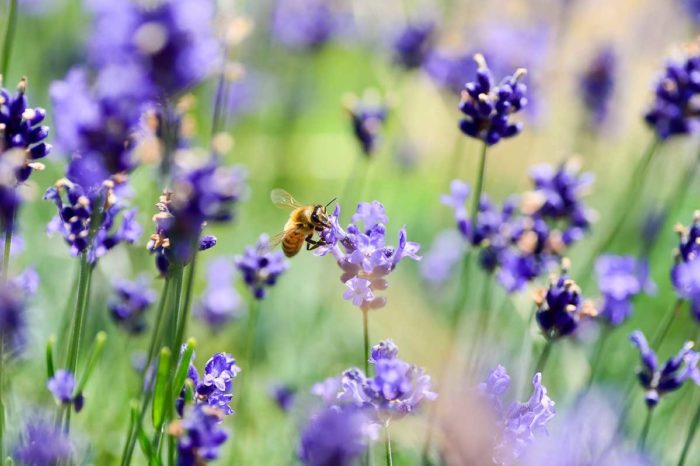
Many retail suppliers sell ‘bee-friendly’ plants for the home garden. However, rarely are the plants labeled to indicate whether or not they have been grown with chemicals.
The FOE US Report ‘Gardeners Beware: Bee-Toxic Pesticides Found in “Bee-Friendly” Plants Sold at Garden Centers Nationwide’ (2013) states: “Unfortunately, pollinator-friendly nursery plants sold to unsuspecting consumers carry neither a list of pesticides used nor do they carry a warning that these pesticides could harm pollinators. Consumers may unwittingly be purchasing bee-attractive plants that have been pre-treated with neonicotinoid pesticides that may be harming or killing bees and other threatened pollinators essential to food production and ecosystem health.”
Unless retail plants have a certified organic label, you may risk introducing a plant that has been grown with a systemic pesticide (neonicotinoid) that is toxic to bees. Ideally, grow your plants from untreated seeds in organic potting soil for your home garden.
Fresh Water
Bees need a local, fresh, reliable water source, especially in warm weather. Just as we would find it difficult to stay afloat in a deep pool while drinking a glass of water, bees can easily drown too! A birdbath is excellent for our feathered friends, but not suitable for bees unless you make some modifications.
A shallow saucer or bowl with a lip and floating flowers or stone ‘steps’ provides a safe landing zone for bees to drink and bath without drowning. Make sure your bee bath has a shallow end or edge where they can sit and sip.
Free food – Plant Bee-Friendly Flowers
Flowers and bees are made for each other. Bees help themselves to free food, and the flowers benefit from their complimentary reproduction service.
What Do Bees Feed On?
Nectar (high in sugars and carbohydrates for energy).
Pollen (supplies proteins and fats).
Flowers meet both these needs. Some flowers are only nectar producers; others also provide pollen. I include flowers in every garden bed and most container gardens, especially if I’m planting fruiting crops. Fruit + flowers = Happy harvest.
Honey bees collect nectar from flowers as a food source for energy. While they are foraging for nectar, they also gather pollen on their back legs. They carry this back to the nest to provide proteins and fats for their babies (brood).
Be Color-wise with Flowers
Flowers are like colorful advertisements to attract the attention of bees, offering a sugary bribe for their free pollination services.
Research suggests bees have favorite colors and are drawn to flowers that are richest in nectar. Bees can see UV light and a range of blues, violets, yellows, and greens, but not red.
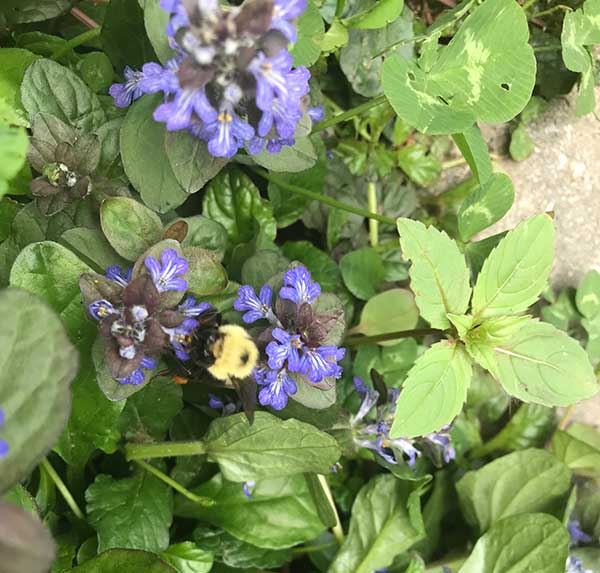
According to Associate Professor, Adrian Dyer of RMIT University, “many flowers have ‘ultraviolet nectar guides’ on them. The patterns are like signposts telling bees where to go to find the nectar.”
So, always include a variety of blue, purple, violet, and yellow blooms if you can.
Grow Fragrant Flowers
Bees are also attracted to very strongly patterned and heavily scented flowers, often those that have a sweet-smelling perfume. Nasturtiums are a great example, especially when planted en masse.
Aim for Continuous Flowering all Year
Choose local native varieties of plants (edible and ornamental) that stagger flowering throughout the year, so you have a food source for bees year-round. Long-flowering species that are full of nectar and pollen will encourage bees to hang around for longer than short-lived annuals.
Tips for the Best Flowers to Attract Bees
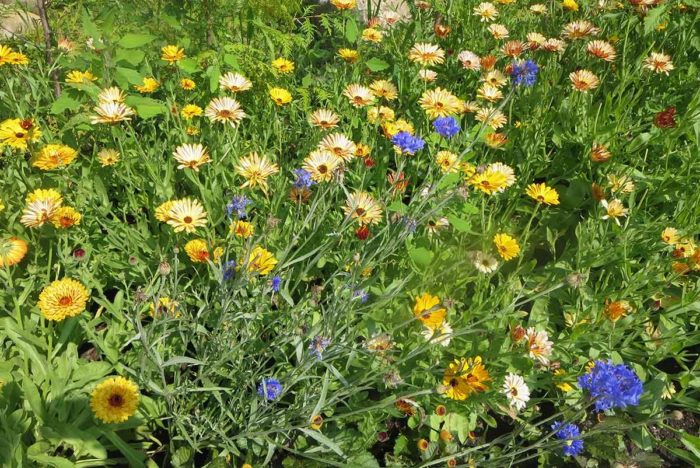
- Choose traditional flower varieties, particularly those with single flowers (where you can see the stamens). These flowers tend to have more nectar than modern hybrids. Most bees prefer shallow and tubular flowers that have a ‘landing platform.’
- If you’re not sure what to buy when you are at your local nursery, observe which flowers the bees are visiting. They don’t waste time or energy on looking for food at ‘empty flower stores.
- Include a diverse range of flower shapes, colors, and sizes. Different bee species vary in how long their tongues are, so they can feed on a wide range of flowers.
- Sow flowers and plants of the same type in small groups. This not only looks pretty but also helps increase pollination efficiency. If a bee can visit the same kind of flower over and over in one place (e.g. in a pot or garden bed), it takes less energy and effort to relearn how to enter that kind of flower. It can just move from one flower to the next of the same species (e.g. pumpkins), transferring pollen as it feeds. This increases the chances for successful pollination, rather than wasting the pollen collected on unreceptive flowers of different species.
- A cottage garden or ornamental kitchen garden are bee-friendly designs because they include many flowers, flowering herbs, and vegetables. Borders and clumps of flowering herbs and colorful blooms make it quick and easy for bees to locate nectar and pollen. They don’t have to fly as far, so you’re helping them conserve their energy and gather more food to return to their nest.
- During an average collection trip, a honey bee visits 50-100 flowers. If you don’t have this many flowers in your garden, bees are likely flying next door to finish ‘shopping’ for food.
Favorite Flowers and Herbs for Bees
-

Nasturtiums -

Coneflower -

Zinnias
The following is just a brief list of a few flowering plants bees love that you can include in your garden.
Flowers: Sweet alyssum, marigolds, sunflowers, dianthus, cosmos, poppies, zinnias, salvias, and lavender.
Flowering Herbs: Oregano, nasturtium, all sages but especially pineapple sage, all basils, thyme, lavender, dill, comfrey, garlic chives, catmint, coriander/cilantro, all mints, lemon balm, rosemary, verbena, borage, yarrow, parsley, and fennel.
So, if you provide ‘bed and board’ with a free meal of nectar and pollen thrown in, you can easily create a bee-friendly garden. If your space is minimal, take these tips and downscale to pots. We can all support our local bee populations!
Sources:
* ‘Foraging by Male and Female Solitary Bees with Implications for Pollination’ – G. Ne’eman, O. Shavit, L.
Shaltiel and A. Shmida, 2006. Journal of Insect Behavior 19(3): 383-401
